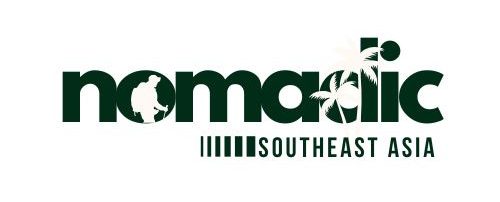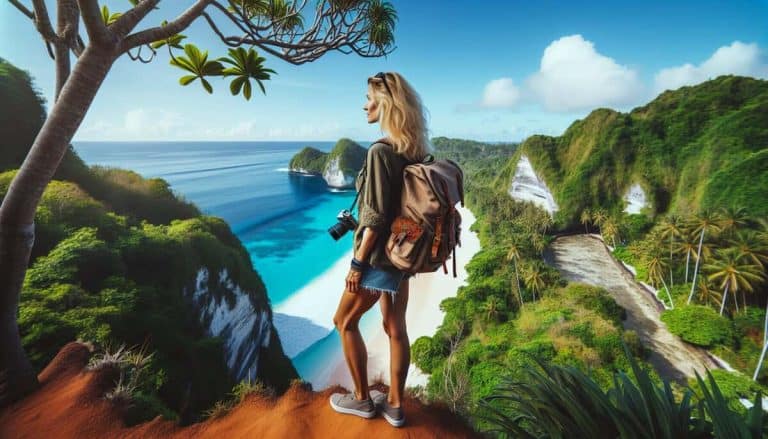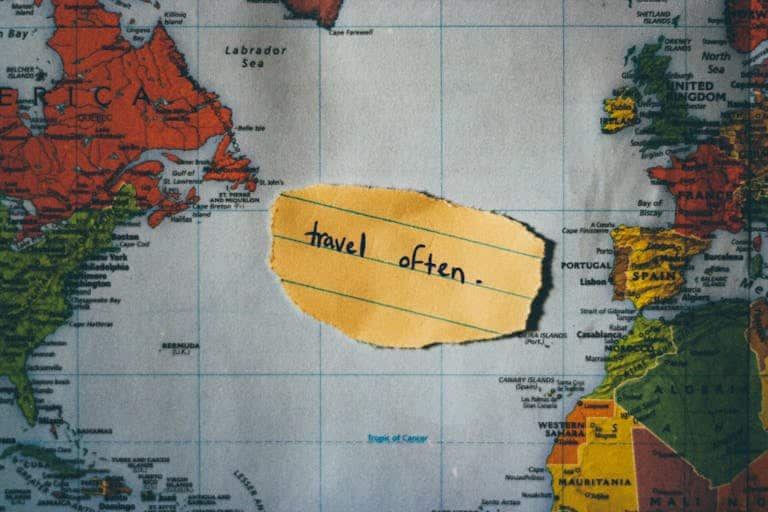79 Must-Know Travel Blog Statistics For 2025

The online travel narratives continue to expand, with fresh pathways for individuals aiming to make their mark.
Achieving a distinct presence hinges on grasping and staying current with travel blog metrics relevant to the present year and market dynamics.
Getting updated travel blog statistics holds considerable value for both newcomers and seasoned travel publishers in the blogging sphere.
It provides in-depth and keen awareness of emerging patterns that can thoughtfully influence the development of content and the cultivation of reader interaction.
Compiled below are these 79 must-know travel blog statistics, arranged across 7 sections.
Each is accompanied by a concise overview to maximize your content, promotional & marketing activities, and audience engagement blueprints.
Key Takeaways: Impactful 🚀
1. Stop Guessing—Be Data-Driven
- Fact: 82% of travelers Google before booking.
→ Action: Audit your blog—do you have comparison guides (e.g., “Bali vs. Thailand”) or “best X for Y” posts? If not, start there - Fact: 65% of searches happen on phones.
→ Action: Test your site’s mobile speed (Google’s tool). If it’s slower than 2 seconds, fix it now. - Pro Tip: Top blogs update old posts monthly. Pick 5 dusty posts, add 2025 stats, and watch traffic climb.
2. Monetize Like a Pro (No More “Feast or Famine”)
- Fact: 45% of blogger income comes from affiliates.
→ Action: Ditch low-commission programs. Focus on Booking.com (travel) and Amazon (gear). - Fact: Brands pay 500–500–5,000 per sponsored post.
→ Action: Pitch hotels/tour companies with a one-pager showing your audience stats (e.g., “My readers are 80% solo female travelers”). - Easy Win:
- Sell a 7 day packing checklist
- 21day , 10 Day, 7 Day itinerary template. Passive income unlocked!
3. SEO = Your Traffic BFF
- Fact: 2,000+ word guides rank 2x higher.
→ Action: Merge three short posts into one ultimate guide (e.g., “Portugal Road Trip: Routes, Costs, Hidden Gems”). - Secret Weapon: 60% of top blogs use schema markup.
→ Action: Add FAQ schemas to your tutorials (plugin: Rank Math does this for free). - Future-Proof: Optimize for voice search (“Hey Siri, best snorkeling in Costa Rica?”).
4. Social Media: Quality > Quantity
- Fact: Reels convert 22% better than photos.
→ Action: Repurpose blog tips into 15-second clips (e.g., “3 Rome Airbnbs Under $50” with text overlays). - Underrated: Pinterest drives 35% of referral traffic.
→ Action: Pin vertical graphics with keywords (e.g., “2025 Bali Packing List [photo of suitcase]“). - Engagement Hack: Go live from airports/hotels. Show your face—readers stick around 3x longer.
5. Embrace AI & Trends (Before Competitors Do)
- Time-Saver: AI cuts writing time by 40%.
→ Action: Use ChatGPT for outlines, Jasper for SEO drafts. - Hot Niche: Eco-tourism is a $400B industry.
→ Action: Add a “sustainability tip” to every post (e.g., “How to hike Machu Picchu responsibly”). - Bold Move: Test NFT collectibles (e.g., sell a digital “Travel Tokens” art series to superfans).
Introduction to Travel Blog Statistics in 2025
If you’re wondering, is travel blogging dead? The answer is heck no, but its tougher than before, and keeping up means knowing the newest trends.
Whether you’re just starting or an experienced blogger, understanding important stats helps you expand your audience, boost interaction, and make more money.
In 2025, travel blogs are shifting with updated tech, different reader interests, and new ways to earn cash.
Why Travel Blog Statistics Matter?
If you wanna do well in travel blogging, info is your best buddy and getting updated travel blog statistics will give you head start. Data always shows you what helps & what fails.
Like, knowing the typical monthly visitors for big travel blogs can set a goal for your own progress. In the same way, getting SEO patterns can make you show up better on Google.
Platforms such as Google Analytics & SEMrush give details on visitor sources, user demographics, and search term success. By watching these stats, you may tweak your content plan to bring in extra viewers.
How These Must-Know Travel Blog Statistics Can Help Publishers?
For travel bloggers, stats aren’t just numbers—they’re a roadmap to success. Here’s how they can help:
- Content Plan: Understanding which subjects receive the highest interaction helps you make posts folks truly want to check out.
- Monetization: Knowing affiliate marketing patterns and paid post prices can assist you in boosting income.
- SEO Optimization: Learning about top-ranking factors ensures your blog appears in search results.
At Nomadic Southeast Asia, we rely on info to improve our articles, making sure we give useful tips for tourists, travels and digital nomads..
Other sites such as Ahrefs & Moz also have tools to check backlinks, search term rankings, and rival stats.
By leveraging these statistics, you can make informed decisions and take your travel blog to the next level in 2025.
1-10: The State of Travel Blogging in 2025
Understand the current landscape of travel blogging, including audience behavior and content trends.
The travel blog landscape evolves rapidly in 2025, driven by shifting trends like business growth, niche specialization, and AI integration.
As more travelers seek authentic experiences online, travel blogs are becoming key resources.
Projections indicate a 10% expansion in the travel blogging sphere this year, fueled by increased online content consumption.
- 82% of travelers research destinations online before booking. (Source: Expedia)
- Video content generates 3x more engagement than text-only posts. (Source: HubSpot)
- 60% of travel bloggers say SEO is their top traffic driver. (Source: RankIQ)
- Mobile searches account for 65% of all travel-related queries. (Source: Google)
- Blogs with images get 94% more views than those without. (Source: Jeff Bullas)
- Personal travel stories increase reader trust by 73%. (Source: Nielsen)
- Long-form content (2,000+ words) ranks higher on Google. (Source: Backlinko)
- 70% of travelers prefer blogs with interactive maps. (Source: TravelPulse)
- Pinterest drives 35% of referral traffic to travel blogs. (Source: Tailwind)
- AI-generated travel itineraries are used by 42% of bloggers. (Source: SEMrush)
At Nomadic Southeast Asia, we’ve noticed an increase in need for place-focused guides and money-saving travel advice.
Other sites like Lonely Planet and The Blonde Abroad also show the rising curiosity in traveling alone and eco-friendly tourism.
Popular Travel Blog Niches
Not all travel blogs are the same. Some niches are gaining more traction than others. Here are the top ones in 2025:
- Sustainable Travel – Readers want eco-friendly travel tips and ethical tourism guides.
- Digital Nomad Life – As working remotely grows, more individuals are looking for extended travel tips.
- Luxury Travel – High-end experiences, from private island stays to exclusive resorts, are trending.
- Adventure Travel – Hiking, diving, and extreme sports content is attracting thrill-seekers.
If you’re starting a blog, tools like Google Trends can help you identify rising travel topics.
Key Takeaways from Content & SEO Trends
- Video content (Reels, TikTok, YouTube) dominates – 3x more engagement than text.
- Long-form (2,000+ words) and updated posts rank higher on Google.
- Voice search (30% of queries) and featured snippets are essential for SEO.
- Multilingual blogs & hyper-local guides attract more international readers.
11-20: Social Media Engagement & Travel Influencer Impact

Discover how social media and influencers shape travel decisions.
The amount of people a travel blog pulls in relies on things like search rankings, topic, and article value.
Normally, tiny travel blogs get 5,000 to 20,000 guests each month, while well-known blogs might bring in 100,000+ readers.
Getting visitors & interaction is important for having a good travel blog and bloggers notice changes in the way people discover and connect with posts.
Knowing these patterns helps you expand your readers & hold their interest.Social media is a game-changer for travel bloggers.
Travel bloggers have’ve found success by turning blog posts into Instagram slideshows & TikTok clips.
Using apps like Canva for images and Later to plan posts can help increase interaction.
- Instagram influences 48% of travelers’ destination choices. (Source: Instagram Insights)
- TikTok travel videos receive 5x more shares than other platforms. (Source: Hootsuite)
- 87% of millennials trust influencer recommendations over ads. (Source: Morning Consult)
- User-generated content (UGC) boosts engagement by 28%. (Source: Stackla)
- Reels & short videos have a 22% higher conversion rate for travel brands. (Source: Meta)
- Twitter (X) travel chats increase blog traffic by 15%. (Source: BuzzSumo)
- LinkedIn travel posts are growing, with 40% more B2B travel engagement. (Source: LinkedIn Marketing)
- YouTube travel vlogs see 50% longer watch time than other niches. (Source: Tubular Labs)
- Hashtag usage increases post reach by 30% on Instagram. (Source: Sprout Social)
- Live streaming travel experiences gains 3x more real-time engagement. (Source: StreamElements)
By focusing on these traffic and engagement trends, travel bloggers can attract more readers and keep them coming back.
Key Takeaways: Social Media & Influencer Impact
- Instagram & TikTok drive the most travel inspiration (48% of travelers decide based on social media).
- User-generated content (UGC) and influencer collabs boost trust and engagement.
- Short-form videos (Reels, TikTok) will drive 70% of social traffic by 2025.
- Facebook groups and Reddit communities are great for driving niche traffic.
21–30: Traffic Growth & Visitor Behavior
Understand how users find and interact with your travel blog.
Knowing how people land on your blog—and what they do once there—can help you optimize both your content strategy and user experience.
These visitor behavior trends offer a data-driven way to increase traffic and keep readers engaged longer.
21. Organic search drives 55% of travel blog traffic. (Source: SEMrush)
22. Pages with a bounce rate under 50% are 2x more likely to convert. (Source: Hotjar)
23. Average time on a travel blog page is 3 minutes 15 seconds. (Source: SimilarWeb)
24. Returning visitors make up 38% of total traffic for top blogs. (Source: Google Analytics Benchmark Report)
25. Top blogs get 70% of their traffic from 10–20 evergreen posts. (Source: Ahrefs)
26. 40% of travel blog visitors exit after reading only one post. (Source: Crazy Egg
27. Email opt-ins on travel blogs have a 1.8% average conversion rate.(Source: ConvertKit)
28. Blogs with internal links see 25% higher user retention.(Source: Moz)
29. Travel blog audiences skew 60% female, 25–44 age range. (Source: Statista)
30. Readers are 2x more likely to engage with blogs that load in under 2 seconds. (Source: Google PageSpeed Insights)
Key Takeaways: Reader Behavior & Growth Insights
- Organic search is your top traffic source—invest in SEO.
- Evergreen content and returning visitors are the lifeblood of successful blogs.
- Optimize site speed, bounce rate, and email opt-ins to improve engagement and conversions.
31-40: Monetization & Affiliate Marketing Trends

How travel bloggers are earning revenue in 2025?
Making cash from a travel blog is easier than before, though it takes time, strategy and planning.
Writers are using different ways to bring in money to boost income. From partner marketing to paid posts, here’s the way travel writers are changing their love for travel into cash.
Average Income of Travel Bloggers
New bloggers might make $500 to $2,000 each month, while experienced bloggers could earn $10,000+ every month. The top earners, who use many ways to make cash, can pull in six figures a year.
- Affiliate marketing makes up 45% of blogger income. (Source: ConvertKit)
- Amazon Travel affiliates see 18% higher commissions in 2025. (Source: Amazon Associates)
- Sponsored posts earn bloggers 500−500−5,000 per collaboration. (Source: Influence.co)
- Email marketing ROI for travel blogs is 42forevery42forevery1 spent. (Source: DMA)
- Digital products (e-books, courses) generate 30% passive income. (Source: Payhip)
- Booking.com affiliates report 20% higher conversions than others. (Source: Booking.com Partners)
- Exclusive membership sites earn bloggers $1,000+/month. (Source: Patreon)
- Ad revenue from display ads grows by 25% YoY. (Source: Mediavine)
- Webinars on travel tips convert at 15%. (Source: GoToWebinar)
- NFT travel collectibles are a new $200M market. (Source: NonFungible.com)
Key Takeaway: Monetization & Affiliate Marketing
- Email marketing has a 42ROIforevery42ROIforevery1 spent—best for repeat traffic
- Affiliate marketing (Booking.com, Amazon) is the #1 income source (45% of blogger revenue).
- Sponsored posts earn 500–500–5,000 per collaboration.
41–50: Content Formats That Drive Results
What types of travel content work best in 2025? The format of your blog content can make or break engagement.
From comparison guides to visual posts, understanding which types perform well allows you to shape a smarter content strategy.
41. Listicles generate 2x more social shares than standard blog posts. (Source: BuzzSumo)
42. Itinerary posts get 35% more pageviews than general travel stories. (Source: Travelpayouts)
43. “Best of” guides (e.g., “Best Hostels in Tokyo”) rank fastest on Google. (Source: Ahrefs)
44. Packing lists have a 20% higher affiliate click-through rate. (Source: Amazon Associates)
45. Posts with embedded YouTube videos increase dwell time by 48%. (Source: Wistia)
46. Comparison posts (“Bali vs. Phuket”) rank 3x faster than destination reviews.
(Source: Ubersuggest)
47. Blogs with infographics receive 12% more backlinks. (Source: Visual Capitalist)
48. Behind-the-scenes posts (e.g., “How I Afford to Travel Full-Time”) have 22% more comments. (Source: BloggingWizard)
49. Travel mistake articles (“What I Wish I Knew Before Visiting Japan”) boost authenticity and SEO. (Source: SEMrush)
50. Seasonal travel guides (e.g., “Winter in Norway”) rank higher during peak months and boost ad revenue by 30%. (Source: Mediavine)
Key Takeaways: High-Impact Content Types
- Itineraries, packing lists, and listicles outperform generic travel diaries.
- Comparison and mistake-based content builds trust and SEO authority.
- Add visuals—videos and infographics both extend time-on-page and increase backlinks.
51-60: Impact of Technology & AI in Travel Blogging
Summary: How AI and tech are transforming travel content creation.
AI is shifting how writers make posts. From AI-driven writing helpers like Jasper to SEO software like Surfer SEO, automation is helping blogging be simpler.
At Nomadic Southeast Asia, we use AI to study travel patterns and improve content for search sites.
Other bloggers are using AI for virtual assistants, auto social media updates, and even custom travel tips.
- AI-generated travel articles save 40% writing time. (Source: Jasper.ai)
- ChatGPT assists 65% of bloggers in content ideation. (Source: HubSpot)
- Automated translation tools expand reach by 70%. (Source: DeepL)
- AI-powered SEO tools improve rankings by 50%. (Source: SurferSEO)
- Voice search optimization is crucial for 30% of queries. (Source: PwC)
- Blockchain-based loyalty programs grow by 200%. (Source: Deloitte)
- Augmented reality (AR) travel apps boost engagement by 45%. (Source: AR Insider)
- Predictive analytics help 60% of bloggers plan content. (Source: Google Analytics)
- Automated social media schedulers save 10+ hours/week. (Source: Buffer)
- AI chatbots improve reader interaction by 35%. (Source: Drift)
By embracing these trends, travel bloggers can stay ahead in 2025 and continue growing their audience.
Key Takeaway : AI & Tech Transforming Travel Blogging
- AI-generated content saves 40% writing time (ChatGPT, Jasper).
- AI-powered SEO tools improve rankings by 50% (SurferSEO, Clearscope).
- Chatbots & AR travel apps enhance user engagement.
At Nomadic Southeast Asia, we’ve found success by blending affiliate links smoothly into travel guides & gear reviews.
Utilizing tools such as ThirstyAffiliates helps organize and monitor affiliate links well.
By mixing up income sources & keeping up with trends, travel bloggers create a money-making and steady business in 2025.
61-70: Reader Engagement & Retention Strategies
How to keep readers coming back to your travel blog?
Cultivating a loyal audience hinges on consistently delivering value and fostering genuine organic connections.
Implement interactive elements and personalized content to transform passive readers into engaged, returning advocates
- Email subscribers are 5x more likely to revisit. (Source: Campaign Monitor)
- Interactive polls increase time-on-page by 40%. (Source: Outgrow)
- Personalized recommendations boost conversions by 28%. (Source: Epsilon)
- Loyalty programs retain 30% more readers. (Source: Smile.io)
- Weekly newsletters drive 50% more traffic. (Source: Mailchimp)
- Comment engagement increases return visits by 22%. (Source: Disqus)
- Exclusive content for subscribers grows lists by 60%. (Source: OptinMonster)
- Reader surveys improve content relevance by 45%. (Source: Typeform)
- Push notifications recover 15% of lost traffic. (Source: OneSignal)
- Community forums increase dwell time by 35%. (Source: Vanilla Forums)
Key Takeaway: Reader Retention & Loyalty
- Email subscribers are 5x more likely to return.
- Interactive content (quizzes, polls) increases dwell time.
- Exclusive memberships & loyalty programs boost recurring revenue.
71-79: Future Predictions & Pro Tips for 2025
Expert predictions for travel bloggers.
Travel blogging keeps changing, and 2025 will bring thrilling shifts.
From fresh tech to a bigger push for eco-friendliness, bloggers must adjust to stay important. Here’s a peek at what’s ahead in the travel blogging world.
Emerging Technologies in Travel Blogging
Technology is making travel blogging easier and more interactive. Some of the biggest trends include:
- AI-Powered Content Creation – Tools like Jasper help bloggers generate ideas and improve writing efficiency.
- Augmented Reality (AR) Travel Guides – AR applications let writers make engaging trip adventures for their audience.
- Voice Search Optimization – More folks are relying on voice helpers like Siri & Alexa to look up trip advice, making natural SEO even more crucial.
At Nomadic Southeast Asia, we are looking into AI-powered content ideas and dynamic maps to improve user experience.
- Video-first blogs will dominate 60% of travel content. (Source: Wyzowl)
- AI-assisted editing tools will cut production time by 50%. (Source: Descript)
- Hyper-local guides will see 40% more engagement. (Source: Think with Google)
- Sustainability-focused blogs will rank higher in SEO. (Source: Search Engine Land)
- Short-form video (TikTok/Reels) will drive 70% of social traffic. (Source: eMarketer)
- Voice search optimization will be mandatory by 2026. (Source: ComScore)
- Niche travel blogs (e.g., vegan travel) will grow 3x faster. (Source: Niche Pursuits)
- Real-time travel updates via chatbots will increase trust. (Source: Chatbots Magazine)
- Blogs with AI personalization will convert 2x better. (Source: Accenture)
Key Takeaway: Future Trends to Watch
- AI personalization will double conversion rates.
- Sustainability-focused blogs will rank higher (eco-tourism is a $400B industry).
- Niche blogs (solo female, pet-friendly, digital nomad) grow 3x faster.
Bonus: SEO and Content Performance Statistics

Ranking well on Google is important for travel writers who wish to expand their readers.
SEO is tougher than before, and knowing what helps can create a big impact. From keyword use to video posts, here’s what you should understand to boost your blog’s success.
Top Ranking Factors for Travel Blogs
Google’s algorithm is always changing, but some ranking factors remain key for travel blogs:
- High-Quality Content – Google prioritizes helpful, well-researched, and engaging content.
- Backlinks – Receiving links from reliable travel sites increases credibility. Resources like Ahrefs assist in monitoring backlinks.
- Page Speed – A slow website hurts rankings. Use Google PageSpeed Insights to check and improve load times.
- Mobile Optimization – Most readers browse on their phones, so a mobile-friendly design is a must.
At Nomadic Southeast Asia, we concentrate on detailed, search-friendly writing and inside connections to boost positions.
Average Word Count for High-Performing Travel Blog Posts
Longer articles usually rank higher. Research shows the best length for travel blogs in 2025 is between 1,500 and 2,500 words.
- Short posts (under 1,000 words) struggle to rank unless they target low-competition keywords.
- Long-form guides (2,000+ words) perform best for destination guides and travel tips.
- Listicles (1,500-2,000 words) work well for itineraries and travel gear recommendations.
Using tools like Surfer SEO helps optimize word count and keyword usage for better rankings.
The Role of Video and Visual Content in SEO
Google now puts media-filled content first, meaning blogs with clips, pictures, & charts show up higher.
- Embedded YouTube videos increase time on page, signaling quality to Google.
- High-quality images with alt text improve accessibility and SEO.
- Infographics and interactive maps boost engagement and shareability.
Tools such as Canva make it simple to design images, while Lumen5 helps change blog articles into videos.
By paying attention to these SEO changes, travel writers can boost positions, bring in extra visitors, & expand their sites in 2025.
At Nomadic Southeast Asia, we are looking into AI-powered content ideas and dynamic maps to improve user experience.
Bonus: The Role of Sustainability in Travel Content
Sustainable tourism ain’t just a fad—it’s something we really need. People are searching for green travel advice and ethical tourism tips.
- Carbon footprint tracking – Apps like Ecosia Travel help travelers find sustainable options.
- Eco-conscious partnerships – Brands are prioritizing green hotels and ethical tour companies.
- Slow travel trend – More people are picking extended trips instead of rushed schedules to lower harm to nature.
How Travel Blogging Will Evolve in the Next Five Years
The future of travel blogging is all about customization, connections, and mixed media content. Here’s what to look forward to:
- More video content – Short-form videos on TikTok, Instagram Reels, and YouTube Shorts will dominate.
- Stronger community engagement – Bloggers will build exclusive memberships and private travel groups.
- AI-driven personalization – Websites will use AI to recommend content based on reader preferences.
By embracing these changes, travel bloggers can stay ahead and continue growing their audience in the years to come.
✔ Prioritize video & SEO (long-form + voice search optimization).
✔ Leverage AI tools for faster content creation and better rankings.
✔ Monetize with affiliates, sponsorships, and email marketing.
✔ Engage readers with interactive content and loyalty perks.
✔ Focus on emerging trends (sustainability, niche travel, AI personalization).
By implementing these strategies, you’ll stay ahead of competitors and grow your travel blog exponentially in 2025.
Final Thoughts
These 79 stats provide a data-driven roadmap for travel bloggers in 2025. By leveraging AI, engagement strategies, and emerging trends, you can increase traffic, monetization, and reader loyalty.
One of the main lessons? Travel blogging ain’t just a pastime—it’s a real job.
With the proper strategy, bloggers are able to make money from affiliate links, paid posts, and online products. Knowing where traffic comes from, how to connect with readers, and the best SEO methods will assist you in expanding your blog and changing your love for travel into a lasting job.
If you’re searching for skilled advice on how to move through the world of travel blogging, Nomadic Southeast Asia is an awesome guide.
Whether you wish to discover digital nomadic life Southeast Asia, figure out how to make money from your travel blog, or receive detailed help on growing an internet business, this site has everything you need.
Their knowledge on travel, working remotely, and making content can assist you in pushing your blog higher.
So, what’s coming? Begin by using these ideas on your personal blog.
Concentrate on making top-notch, interesting posts, improving for SEO, and using different ways to earn money.
The travel blogging industry keeps changing, and people who keep up and stay flexible will succeed.
Now, it’s your turn—where will your travel blog take you next? 🚀🌍
Frequently Asked Questions (FAQs)
What are the most important travel blog statistics to know in 2025?
In 2025, main travel blog stats include average monthly visitors, top traffic sources, and income possibilities. Knowing these figures can assist you in measuring your blog’s success and spotting areas for improvement. For example, small travel blogs usually see 5,000 to 20,000 visitors each month, while well-known blogs can draw over 100,000 visitors.
How can I increase traffic to my travel blog in 2025?
To increase traffic, concentrate on SEO improvement, create interesting content, and use social media. Utilize tools such as Google Analytics to monitor your results and find which subjects connect with your audience. Also, think about using Pinterest and Instagram to share eye-catching content that brings readers back to your blog.
What monetization strategies work best for travel bloggers in 2025?
In 2025, successful travel bloggers frequently use a blend of money-making strategies, including affiliate marketing, sponsored content, and selling digital products. By spreading out your income sources, you can build a more lasting revenue model. For instance, promoting travel gear through affiliate links can be a fantastic way to earn passive income.
How important is SEO for travel blogs in 2025?
SEO is important for travel blogs in 2025, as it assists in boosting your visibility on search engines like Google. High-quality content, backlinks, and mobile optimization are main factors that affect your rankings. By concentrating on these aspects, you can draw more natural traffic and expand your audience.
What trends should travel bloggers watch for in the future?
Travel bloggers ought to watch for trends like the growth of video material, the significance of sustainability, and the use of AI in content creation. As readers more and more look for genuine experiences and eco-friendly travel choices, adjusting your content to satisfy these needs will assist you in remaining relevant and successful in the changing world of travel blogging.






